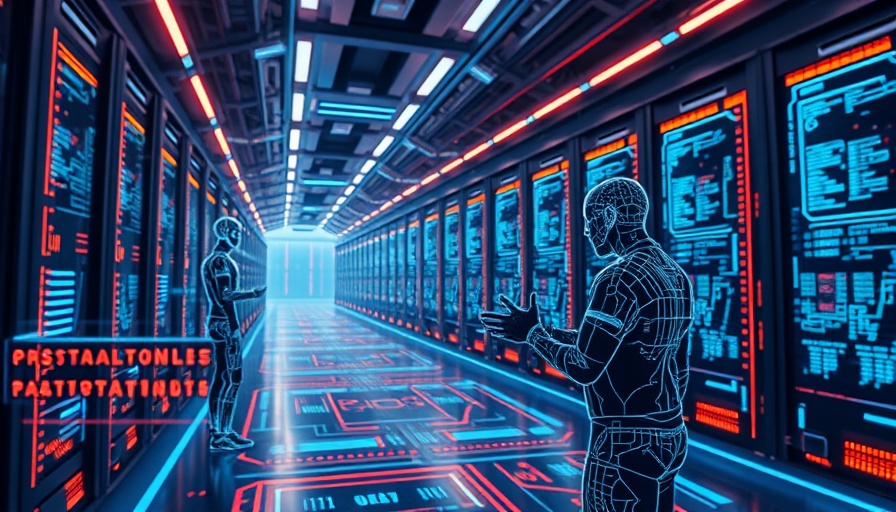
Staying Ahead of the Game: Combatting AI-Powered Cyber Threats in 2025
As artificial intelligence continues to transform various sectors, it also fuels a new wave of sophisticated cyber threats that businesses must contend with. In 2025, organizations are facing unprecedented challenges brought upon by AI-driven cybercrime, requiring a proactive strategy to safeguard sensitive data and ensure security. According to experts, failing to adapt could result in devastating breaches and financial losses.
The Evolving Landscape of Cyber Threats
Cybercriminals are leveraging advanced technologies to execute more precise and persuasive attacks. Artificial intelligence allows for hyper-targeted phishing schemes, where attackers create misleading communication based on scraped data from social media and professional networks. As reported by the World Economic Forum, the risk from AI-driven threats is increasingly significant, particularly as generative AI enhances the depth of disinformation campaigns.
Why AI Makes Cybersecurity More Challenging
The application of AI in cybersecurity isn't inherently negative; however, its misuse by malicious actors has amplified attack capabilities. AI has enabled script kiddies and seasoned hackers alike to develop polymorphic malware that can morph quickly to elude standard security measures. As Bradon Rogers from Intel Security points out, the key differentiator is the precision of the attack. Traditional security measures often falter in detecting attacks that adapt and evolve in real time.
The Importance of Early Detection Systems
To combat these heightened risks, organizations must prioritize early threat detection mechanisms. Sophisticated algorithms can analyze vast datasets to identify anomalies and respond to threats before they can cause harm. As highlighted in recent discussions among cybersecurity leaders, incorporating AI into prevention strategies is crucial. Organizations should develop integrated systems that utilize real-time data and AI analytics to enhance their defense posture against imminent threats.
Expert Recommendations for Businesses
Here are four expert strategies for managing AI-powered threats in 2025:
- Implement Multi-Factor Authentication (MFA): Protecting account access with multiple authentication factors is vital in reducing the risk associated with unauthorized access.
- Enhance Employee Training: Conducting regular training sessions on identifying phishing attempts and social engineering tactics is essential. The latest phishing strategies utilize deepfake technologies designed to deceive employees into transferring sensitive information or funds.
- Strengthen Your Cyber Hygiene: Regularly updating software and systems, backing up data, and employing comprehensive security measures will mitigate the risk posed by potential threats.
- Invest in AI Security Solutions: Integrating machine learning tools can bolster defensive mechanisms by automating threat detection and providing actionable insights.
Preparing for the Unknown: The Future of Cybersecurity
Looking ahead, organizations that embrace a proactive cybersecurity culture are more likely to thrive despite evolving threats. As cybersecurity challenges become increasingly complex, businesses need to adapt continuously, ensuring that their strategies are resilient and forward-thinking.
Call to Action: Be Proactive, Not Reactive
In light of these evolving threats, it’s imperative that businesses invest in robust cybersecurity platforms and cultivate a culture of security within their teams. Don’t wait for a breach to happen; take action now to protect your organization from AI-driven cyber risks that could jeopardize its future.
 Add Row
Add Row  Add
Add 




Write A Comment